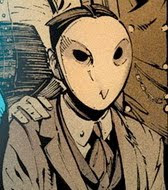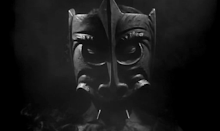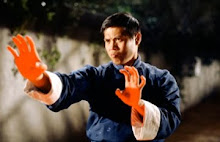
Why’d I Buy It?: Cheap Herzog film. Nuff said.
Why Haven’t I Watched It?: Only bought it recently at the Hollywood Video fire sale.
How Was It?: Buddhism is notoriously uncinematic. Unlike the operatic hemming and hawing of the Abramaric religions, and the exocitism of other Eastern religions like Shintoism or Hindi, there’s just not much to show, when it comes to Buddhism. Inner peace and harmony with ones surroundings is a more then noble goal, its just difficult to film. At one point Herzog even complains, that the "Culmination of the spiritual event is invisible to our cameras."
Wheel Of Time documents the Kalachakra festival (later combined with a second festival, when the Dalai Lama grows ill), held at the place where the Buddha first obtained enlightenment, an event for which over half a million Buddhists assemble. The film cuts between the festival itself; both the events, prayers, rituals and arguments and the logistics of feeding and housing half a million monks and lay people. The long arduous pilgrimage the faithful make. And The construction of the Mandala, at the center of both the film and the festival, a beyond intricate sand painting, which represents nothing less then the visualation of Nirvana.
Herzog captures his subjects and their surroundings with his expert documentarian’s vividness. One of my favorite things Herzog does, as a documentarian, is the way he’s not at all afraid to just let a shot run, unworried about communicating over much in story, character, or theme. Instead he just allows the detail to seep into the film allowing the world to sketch itself in its own intensity. He does it frequently throughout the film, seemingly trying to meditate with its subjects. But there is something furtive and restless about Herzog’s camera.
There are certainly shots here that in their oddity and perfection belong with the best of Herzog, like the long shots of pilgrims stopping at literally every step of their journey, to lie down in prostration on their bellies, on their way to the shrine. Its easy to see in these moments of single mindness what made Herzog want to make the film. Wanting to document those who, as he puts it with his inimitable Teutonic precision “Measure the length of the Earth with his body from head to toe.”
And yet, Herzog is a man who has made his reputation documenting the extremes of both human behavior and the physical world. Ironically this is the first time I’ve ever felt him out of his depth. Not that he makes a bad film, far from it. Its just that where he usually charges forth with teutonic vigor, here he seems not quite sure of himself. Its somewhat Ironic that a man might stare madness directly in the face, and yet be unsure how to react to peace and serenity.





































































































No comments:
Post a Comment